Balcony gardening has become a comforting way for apartment dwellers to bring nature into limited spaces without needing large outdoor areas. Even the smallest balconies can feel refreshing with thoughtful plant choices and simple setups that fit modern urban lifestyles. From herbs to flowering vines, there are countless possibilities to create green corners that feel personal and calming. The following ideas are designed to be approachable, visually pleasing, and practical for any apartment layout, making balcony gardening both enjoyable and manageable.
1. Container Gardens
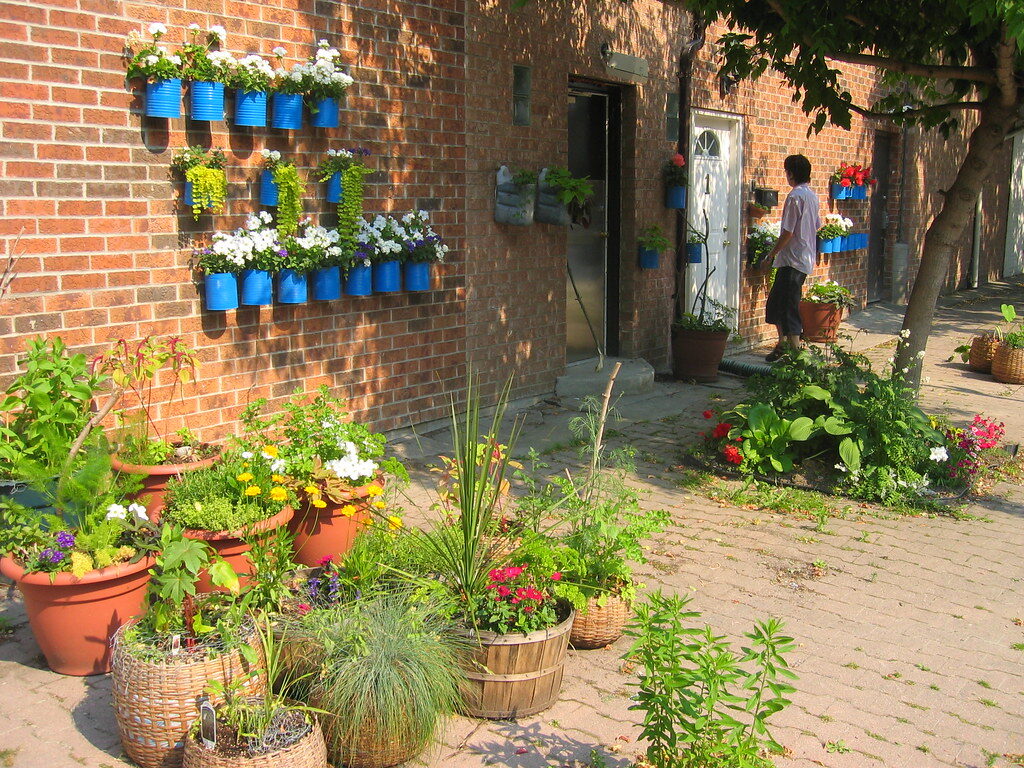
Container gardens remain one of the most reliable ways to transform a small balcony into a vibrant, thriving space. Popularized in the early 2000s as urban living expanded, these setups use lightweight pots, stackable planters, or fiberstone containers ideal for herbs, flowers, and shallow-rooted vegetables. Their portability allows gardeners to shift plants as sunlight changes, making them especially useful for renters who want flexibility. Container gardens also encourage experimentation with shapes and colors, letting you personalize the space with minimal effort while keeping the balcony organized and functional.
2. Vertical Planters
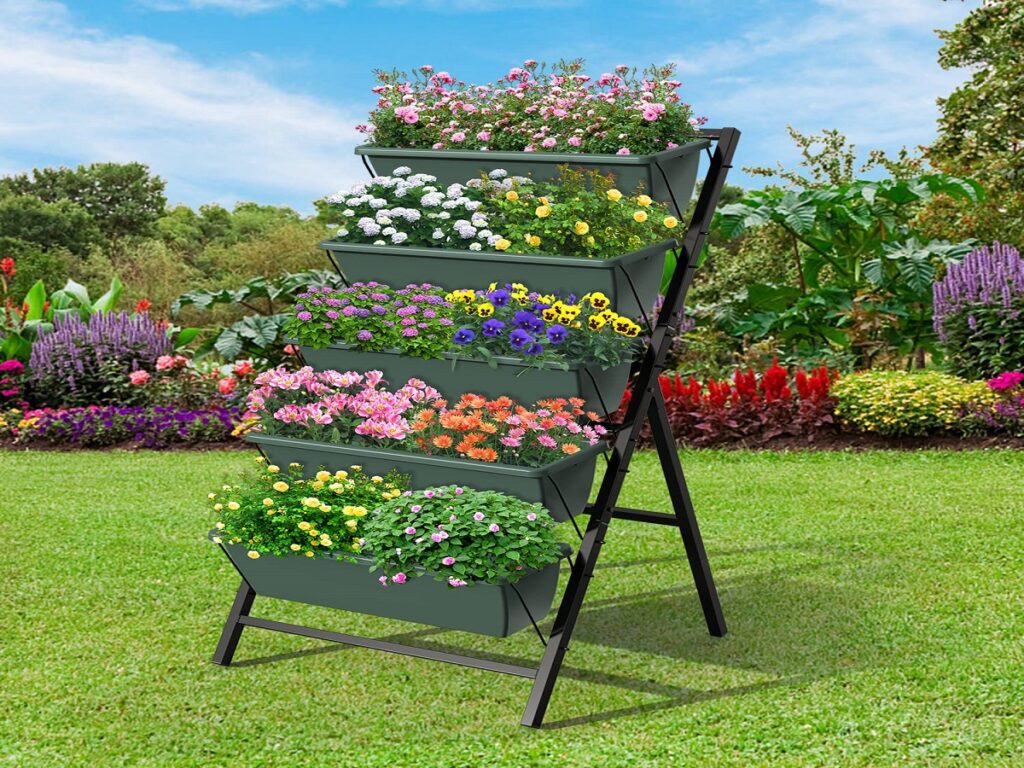
Vertical planters rose to fame around 2015 as compact living encouraged more creative use of limited space. Built from wood, metal, or modular frames, these planters let vines, herbs, and ornamental plants grow upward instead of outward. They’re perfect for narrow balconies where floor space is precious, helping turn plain walls into textured, lively backdrops. Since each tier can be angled toward the sun, plants receive better light distribution throughout the day. Vertical planters also add depth and structure, making even small balconies feel taller and more dynamic without overwhelming the area.
3. Rail Planters
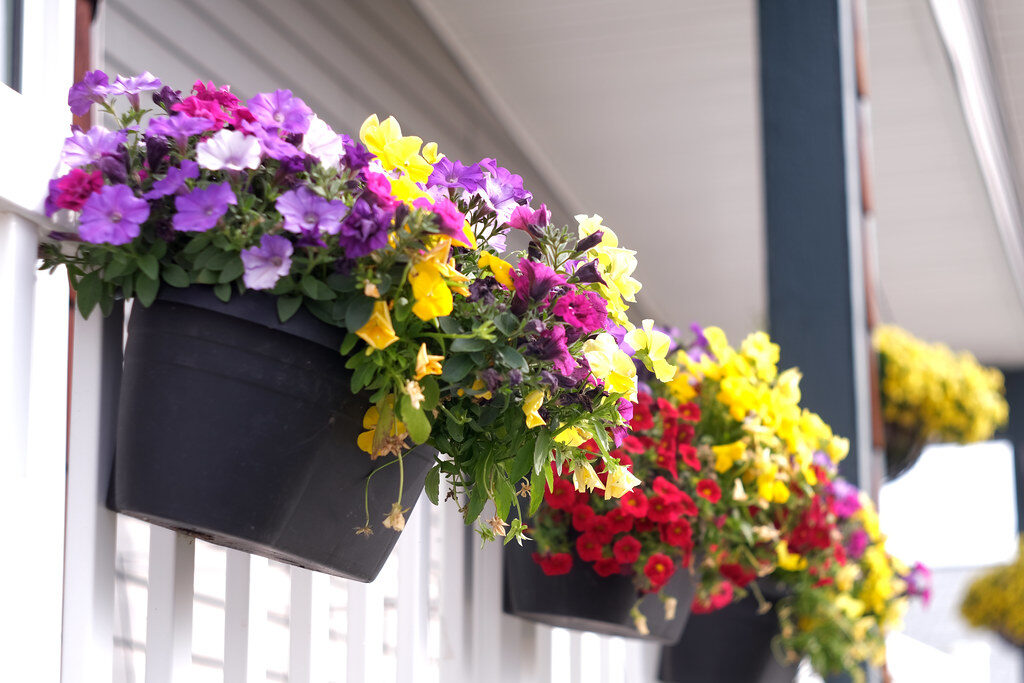
Rail planters first appeared in the late 1980s and have since evolved into sleek, secure options for maximizing balcony edges. Modern versions use resin, galvanized metal, or adjustable clamp systems that attach safely without drilling. These planters keep the floor free while offering excellent growing conditions for petunias, hardy herbs, leafy greens, and colorful seasonal blooms. Their elevated height helps plants capture more sunlight, making them especially suitable for balconies with limited exposure. Rail planters add charm to the balcony’s perimeter and are ideal for renters seeking easy, quick greenery without permanent fixtures.
4. Hanging Baskets
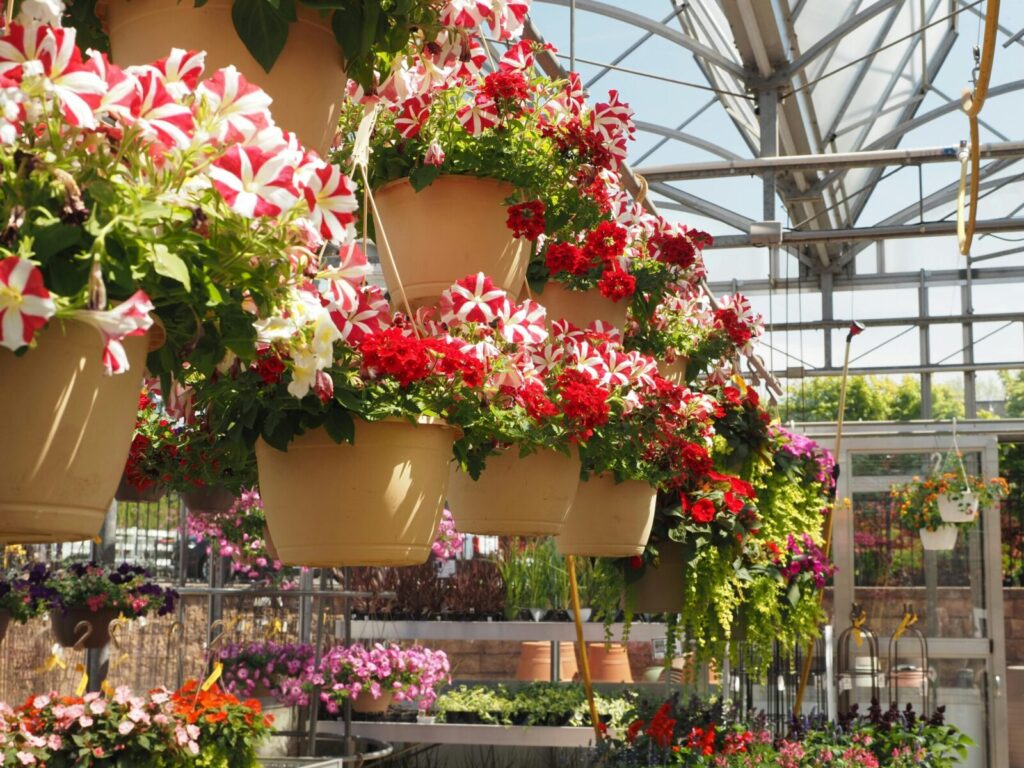
Hanging baskets gained widespread popularity in the 1990s with the rise of lightweight, coco-lined frames designed for trailing plants. Their floating placement lets greenery drape gracefully, making balconies feel layered and airy. Ferns, ivy, petunias, and even compact tomatoes thrive in these baskets since they receive sun from multiple angles. Their gentle sway in the breeze brings softness to balconies that may otherwise feel rigid or box-like. Hanging baskets also allow gardeners to use vertical space creatively, adding movement and color without crowding the floor or railings.
5. Tiered Shelves
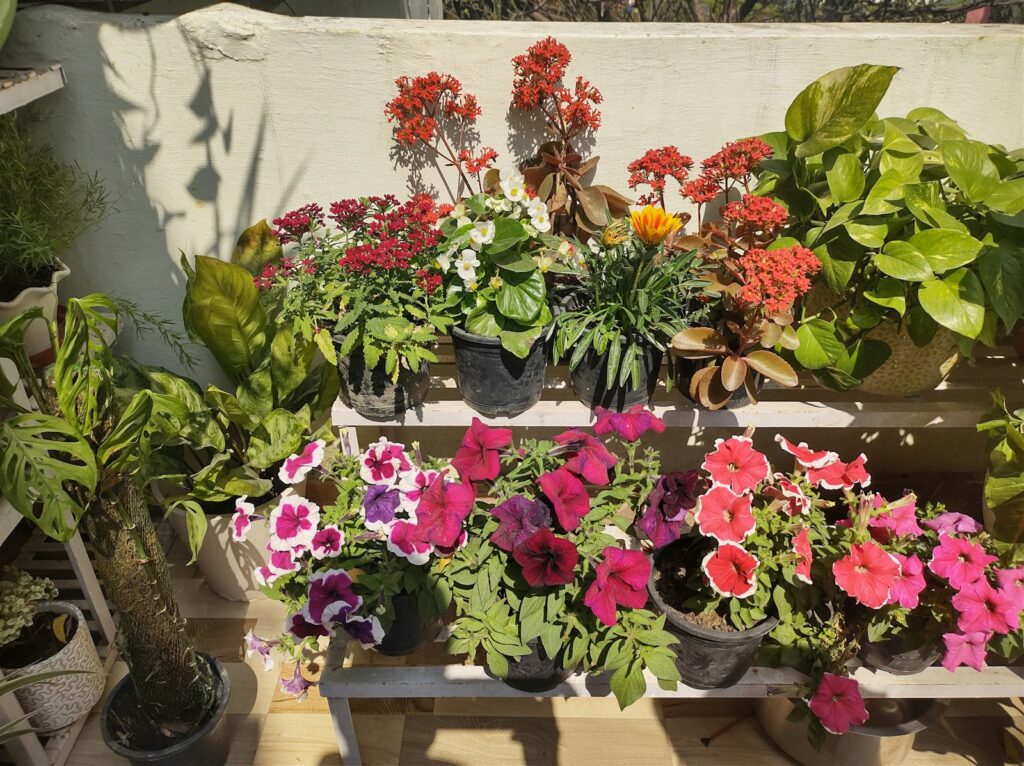
Tiered shelves became common around the early 2010s as modular outdoor furniture grew in popularity. Constructed from treated wood or powder-coated metal, these shelves offer multiple levels for displaying pots in an organized, visually appealing way. They give gardeners the ability to group plants by light needs and water habits while keeping everything accessible. Runoff from upper pots can help moisten lower ones, reducing the effort needed for watering. Their vertical arrangement adds height and style without cluttering the balcony, making them ideal for both beginners and seasoned plant lovers who want a tidy yet dynamic setup.
6. Mini Herb Gardens
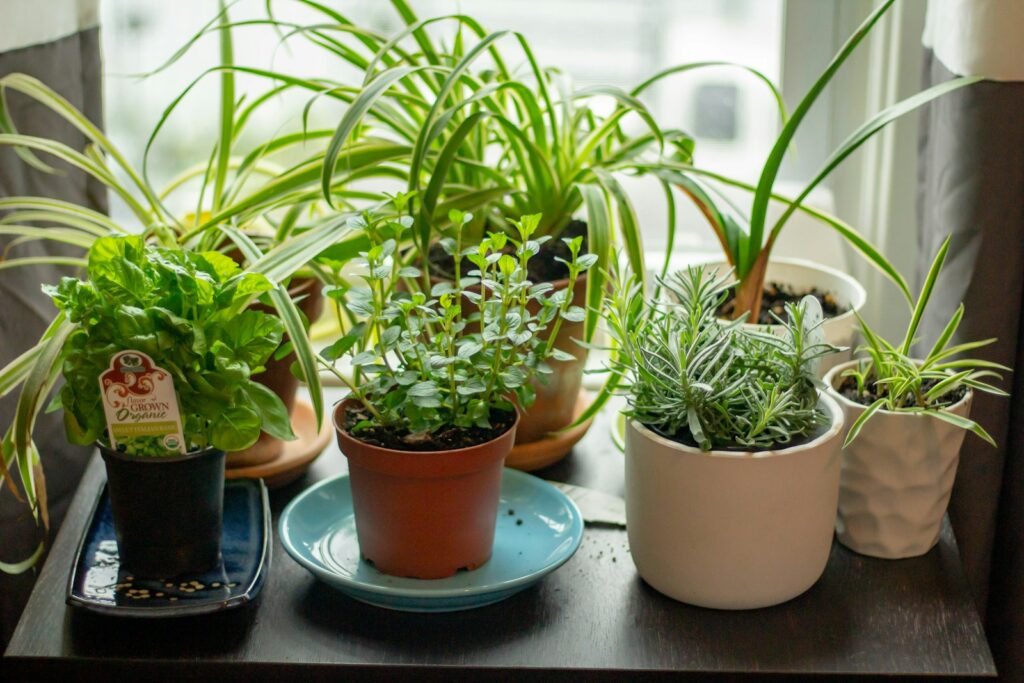
Mini herb gardens surged in popularity in the mid-2000s as cooking at home and compact living spaces encouraged small-scale edible gardening. Herb boxes made from cedar, bamboo, or composite materials hold up well with frequent watering and sunlight. Basil, mint, rosemary, and coriander thrive in these cozy setups, offering fresh harvests just steps from the kitchen. Their manageable size makes them perfect for beginners learning basic plant care, while seasoned gardeners appreciate how herbs release pleasant aromas on warm days. Mini herb gardens bring beauty, convenience, and fragrance to any balcony.
7. Compact Fruit Planters
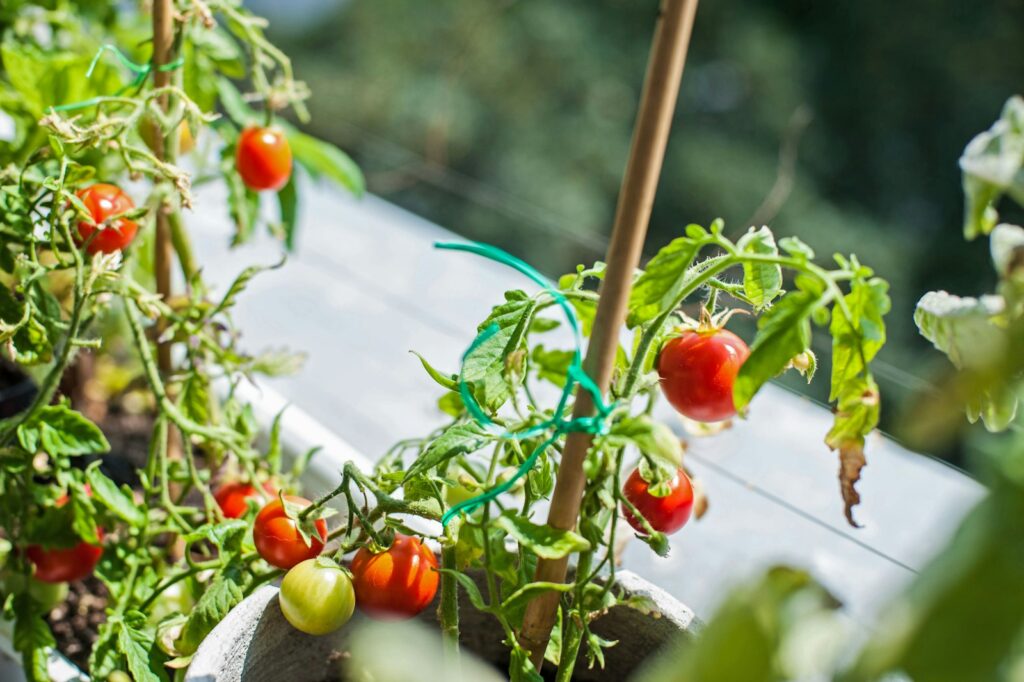
Compact fruit planters became popular around 2012 with the introduction of dwarf plant varieties ideal for small urban spaces. These containers are deeper and sturdier to accommodate the roots of strawberries, dwarf citrus, or compact blueberry bushes. When placed in sunny corners, they offer surprising yields despite their modest size. With regular pruning and feeding, fruit planters provide season-long harvests and add a touch of abundance to balcony life. Their charming appearance and practical output make them perfect for apartment gardeners looking to explore edible gardening without requiring much space or advanced skills.
8. Balcony Trellises

Balcony trellises grew in popularity in the late 1990s as more apartment residents sought climbing plants to soften harsh concrete surroundings. Made from bamboo, metal, or treated wood, these trellises guide vines like jasmine, beans, or climbing roses upward. Positioned against a wall or railing, they create a natural privacy screen while enhancing airflow and light circulation. Their vertical structure keeps plants neat yet lush, and they can quickly turn a simple balcony into a fragrant, leafy retreat. Balcony trellises are ideal for gardeners wanting greenery that grows upward rather than outward.
9. Corner Plant Towers
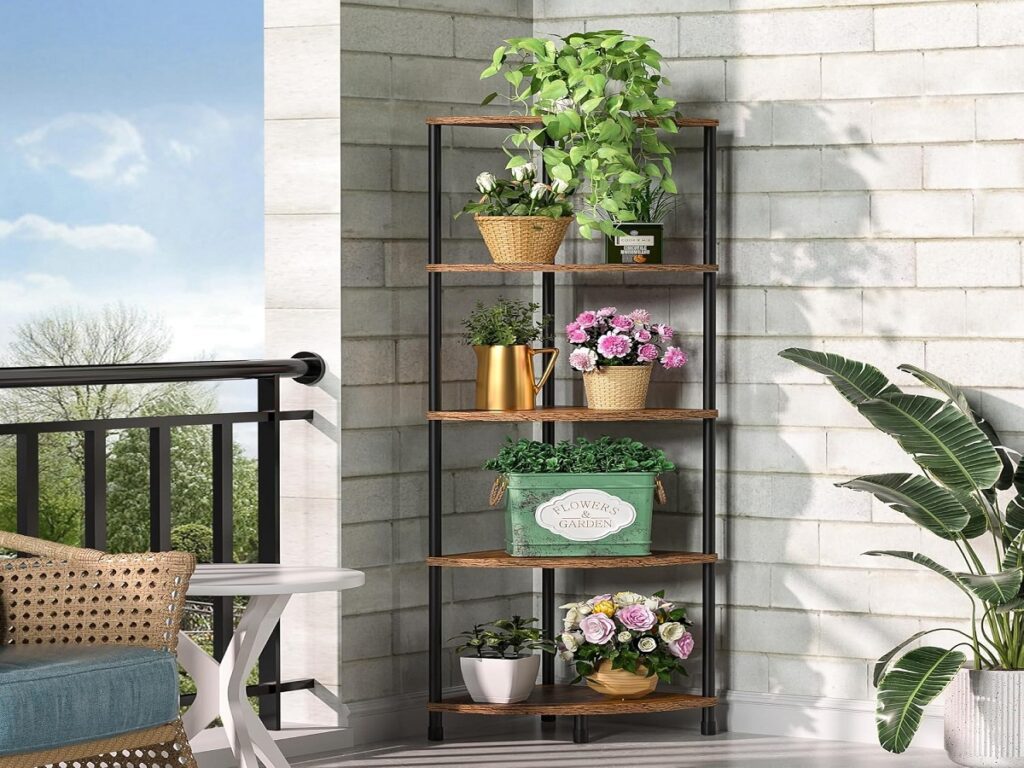
Corner plant towers became popular around 2018 when gardeners began seeking vertical structures specifically designed for unused balcony corners. These towers use stacked trays or rotating shelves that accommodate multiple small pots, allowing plants to grow upward in a compact footprint. Built from lightweight metal or sturdy plastic, they’re easy to move and adjust. Their tiered height helps every plant receive adequate sunlight, and the tower shape adds architectural interest to the space. This design is perfect for those wanting a concentrated splash of greenery without sacrificing valuable seating or walking room.
10. Aromatic Flower Boxes
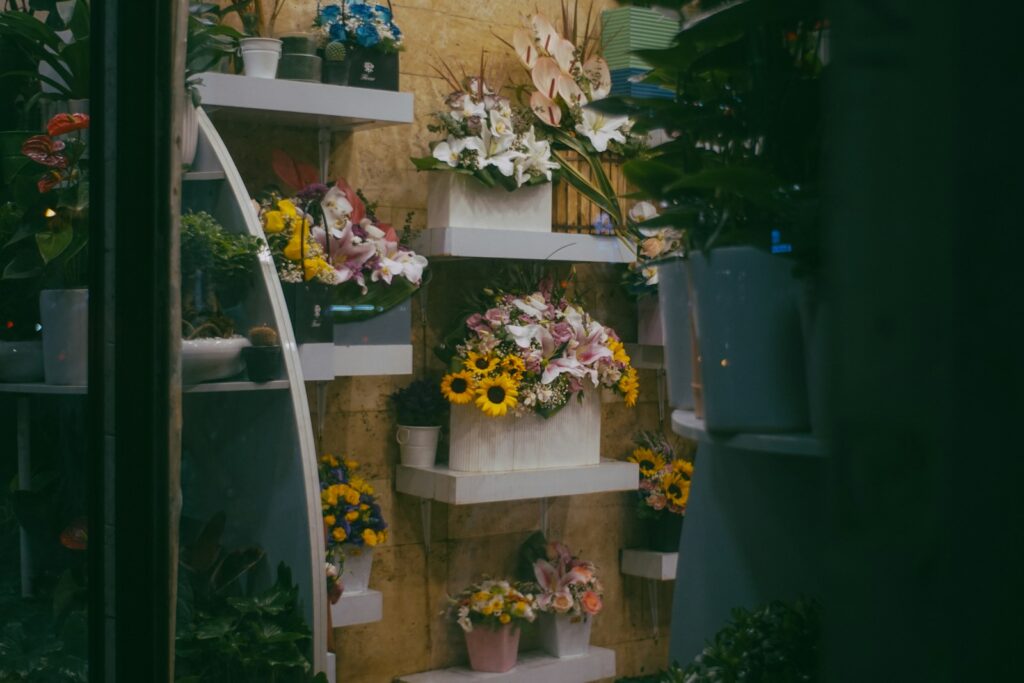
Aromatic flower boxes gained interest in the late 2010s as people began seeking natural ways to refresh small outdoor areas. Built from cedar, pine, or treated composites, these boxes hold fragrant plants such as lavender, jasmine, and marigold. Their pleasant scents drift through the balcony, creating a gentle, calming atmosphere that feels like a mini sanctuary. These boxes also attract beneficial insects like pollinators while staying manageable for beginners. Their straightforward design and soothing aromas make them ideal for balconies where relaxation and beauty are top priorities.
Comments